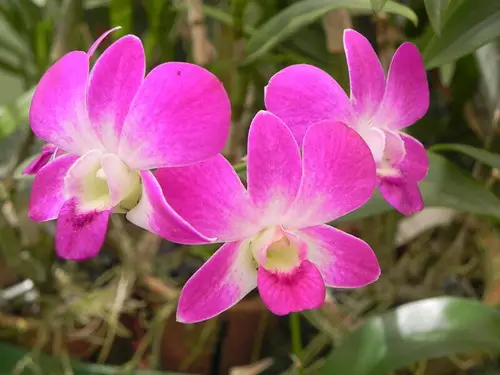Orchids are among the most diverse and widely spread family of flowering plants. With over 25,000 species and more than 100,000 hybrids, the Orchidaceae family can be found on every continent except Antarctica. These plants are renowned for their beautiful and often fragrant flowers, which can vary significantly in size, shape, and color.
Orchids have an exotic appearance and are often considered to be a symbol of luxury and elegance. Their flowers can last for weeks or even months, making them a popular choice as houseplants or as decorative elements in gardens. Though many people believe that orchids are finicky and challenging to care for, many species are quite hardy and adaptable.
The fascination with orchids isn’t new; it has been present for centuries, leading to a phenomenon known as “Orchid Mania” during the Victorian era. Today, orchids continue to captivate gardeners and plant enthusiasts, with societies and clubs dedicated to their cultivation and conservation. Understanding the specific needs and preferences of your chosen orchid type can lead to successful growth and blooming.
| Attribute | Details |
|---|---|
| Common Names | Orchid |
| Botanical Name | Orchidaceae |
| Family | Orchidaceae |
| Plant Type | Perennial |
| Mature Size | Varies (from 1 inch to several feet) |
| Sun Exposure | Partial Shade to Bright Indirect Light |
| Soil Type | Well-drained Orchid Potting Mix |
| Hardiness Zones | Varies (commonly 9-12 for tropical orchids) |
| Native Area | Worldwide, excluding Antarctica |
Orchid Care
Orchids have unique care requirements that differ from most other houseplants. Understanding the specific species or hybrid can significantly aid in proper care. Generally, orchids need bright but indirect light, proper humidity, and a well-drained potting mix designed for orchids.
Watering can be tricky; it’s vital not to overwater orchids as they are susceptible to root rot. A weekly check is usually sufficient, and it’s often better to under-water than over-water. Fertilizing, pruning, and repotting when necessary will also keep your orchid healthy and encourage blooming.
Light Requirement for Orchids
Orchids generally prefer bright but indirect light. Too much direct sunlight can scorch the leaves, while too little light can hinder blooming. Placing orchids near a north or east-facing window is often ideal.
Soil Requirements for Orchids
Orchids require a specific orchid potting mix that allows excellent drainage. Regular potting soil is usually too dense for orchids. The mixture often consists of bark, sphagnum moss, and perlite.
Water Requirements for Orchids
Watering orchids properly is essential for their health. Overwatering can lead to root rot, while underwatering can cause dehydration. Watering once a week, letting water drain thoroughly, is often sufficient.
Temperature and Humidity
Orchids prefer a temperature range of 60-75°F and humidity levels between 40-60%. Using a humidifier or placing a humidity tray near the plant can help maintain optimal humidity.
Fertilizer
Fertilize orchids with a balanced orchid fertilizer every 2-4 weeks during the growing season. Follow the instructions on the fertilizer packaging for the best results.
Pruning Orchids
Pruning is essential to encourage reblooming. Once the flowers fall off, you can cut the spike halfway down, and a new spike might emerge. Remove any dead or diseased foliage as needed.
Propagating Orchids
Orchids can be propagated through division or from keikis (baby plants that grow on the mother plant). Division is typically done during repotting, while keikis can be removed and potted once they have roots.
How To Grow Orchids From Seed
Growing orchids from seed is a complex and often challenging process, requiring sterile conditions and a specific growing medium. It’s usually best left to professionals or experienced hobbyists.
Common Pests & Plant Diseases
Mealybugs
These can be treated with insecticidal soap.
Aphids
Prone to attack new growth; use insecticidal soap or neem oil.
Fungal and Bacterial Diseases
Proper ventilation and avoiding overwatering can prevent these.
Common Problems With Orchids
Yellow Leaves
This may be a sign of too much sunlight or overwatering.
Bud Drop
Sudden changes in temperature, humidity, or drafts can cause this.
No Blooms
Lack of blooming can be due to inadequate light or improper fertilization.
Pro Tips
- Always use a pot with drainage holes for orchids.
- Repot every 1-2 years or when the potting medium breaks down.
- Water with room-temperature water to avoid shock.
- Provide proper ventilation to prevent diseases.
- Identify your specific orchid type for more precise care.




